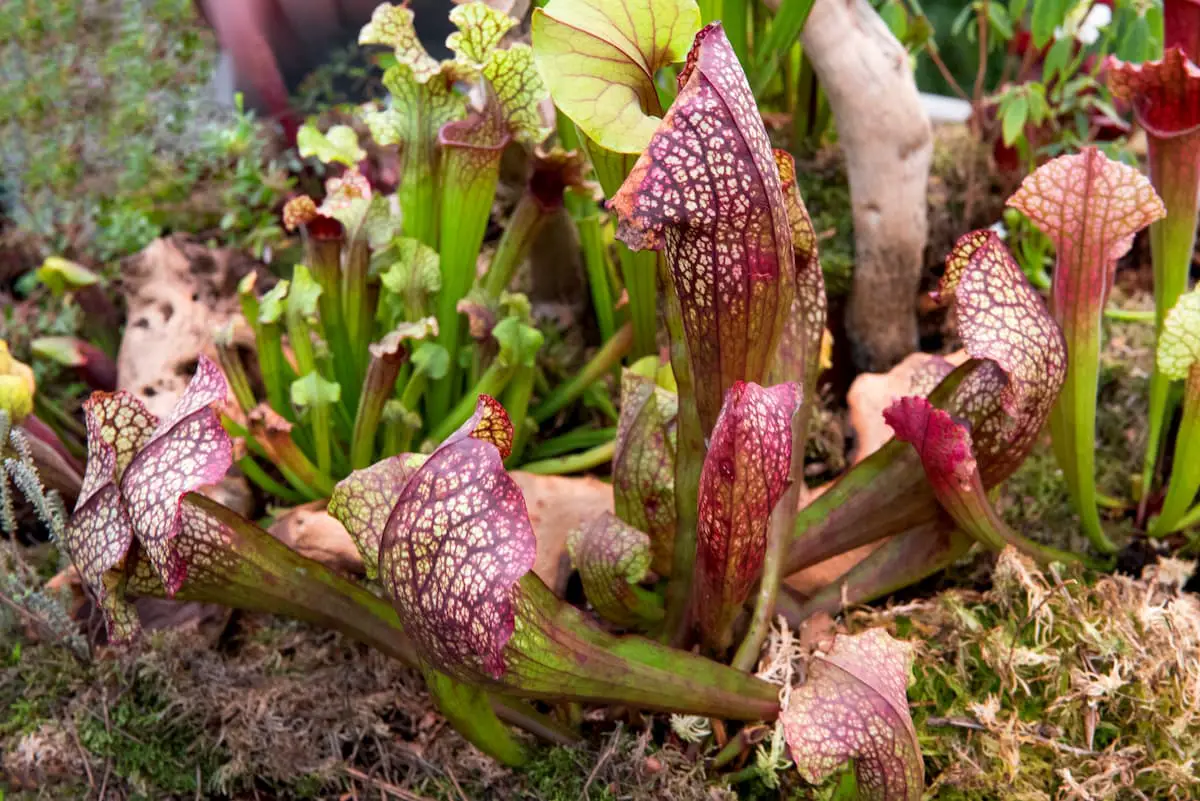Most carnivorous plants are native to more temperate climates which means they will typically require a dormancy period to survive. This is a survival and natural protective process which allows the plants to survive the harsh cold of winter. Dormancy is triggered by cooler nights and shortening day length which typically means around fall to winter transition depending on your location.
Dormancy causes many changes to what you should do to care for your plants. This includes watering them less, leave the soil only damp and not saturated, and include less access to direct sunlight and they actually do not require sunshine at all during dormancy!
Now we will jump into some more nitty gritty around managing your dormancy period for your plants and some of the key differences in a young versus older carnivorous plant instead.
Caring For Carnivorous Plants During Dormancy
Each carnivorous plant is different in how you need to handle them during the dormancy period, making sure to follow your plants dormancy plan will help ensure they survive and come out full of growth for the next year!
What Does a Dormant Venus Fly Trap Look Like?
Your Venus Flytrap will form new winter leaves in preparation for dormancy along with closing and many times killing off the traps. This is more to preserve the energy needed to run the traps for surviving the winter weather.
A Venus Flytrap will produce smaller and smaller traps as fall approaches and moves into winter. Old traps die, fall off and turn black while forming a ring of old traps around a tighter smaller cluster of traps. Though in the worst and extreme cold all the traps may die and the bulb will attempt to survive overwinter underground.

What Does a Dormant Pitcher Plant Look Like?
Unlike many other carnivorous plants the pitcher plant will often keep their tube traps for up to two years. When dormancy comes the tops of the plant hood starts to wither out turning dry and brown. This drying will work its way down the tube which can and sometimes does eventually die. Many times the lower third of the trap can stay green through the winter since the plant can continue to absorb the nutrients from their catches during the summer.
What Does a Dormant Temperate Sundew Look Like?
These plants will develop a fuzzy round button with very tightly curled leaves in the center. Depending on the type some can be less hairy than others, this tight cluster of leaves looks like a tiny set of coiled fern fronds.
How Do Younger Plants Differ Versus Older Plants?
Just like with kids the age of your plant matters much more to how you can manage the dormancy time period. The younger the plants the more you can avoid dormancy if you choose but as they age this could cost them their life.
Under 3+ Seasons
In many cases a vibrant and young carnivorous plant can survive without a dormancy as it is still full of life and growth. While this can be skipped it is not advisable if you want the maximum longevity for your plant.
Over 3 Seasons
An older plant needs dormancy to extend its natural lifespan and without it, they begin to dwindle, becoming less and less vigorous. The issue with a weaker growth cycle is that it will often lead to flowering that takes everything from the plant and kills it, or weakens it significantly enough that the plant succumbs to disease.
Bottom Line
Much of the hardest time for a new gardener for a carnivorous plant is being unsure whether their plant is dying or just becoming dormant. I hope the information given above helps console you and help you know what is actually occurring so that you can prepare them for the coming year!




Leave a Reply